Project milestones help project teams focus on major progress points in a project, which helps project managers with project planning and scheduling. Just as tasks break a larger project into manageable parts, milestones break down project phases to help project managers plan, schedule and execute them.
What Is a Project Milestone?
A project milestone is a project planning tool that’s used to mark a point in a project schedule. Project milestones can note the start and finish of a project, mark the completion of a major phase of work or anything that’s worth highlighting in a project, such as the production of project deliverables.
Milestones help project teams coordinate their efforts by helping everybody understand the objectives of the project and the action steps that must be taken to achieve them.
The Importance of Milestones in Project Management
Project milestones provide a way to more accurately estimate the time it’ll take to complete your project by marking important dates and events, making them essential for precise project planning and scheduling. Because of their versatility, milestones are an important element of project documents such as the project schedule, project charter and project plan. They’re also used in scheduling methodologies, such as the critical path method (CPM), or project management tools like Gantt charts, which can determine major scheduling periods.
With project milestones, you can better calculate the slack in your project by segmenting the project timeline into intervals, or smaller time frames to control and track progress. Project management software, like ProjectManager, makes it easy to build a schedule with project milestones. Use our online Gantt charts to quickly build a project schedule with phases, subtasks, milestones and dependencies. Try it free today.
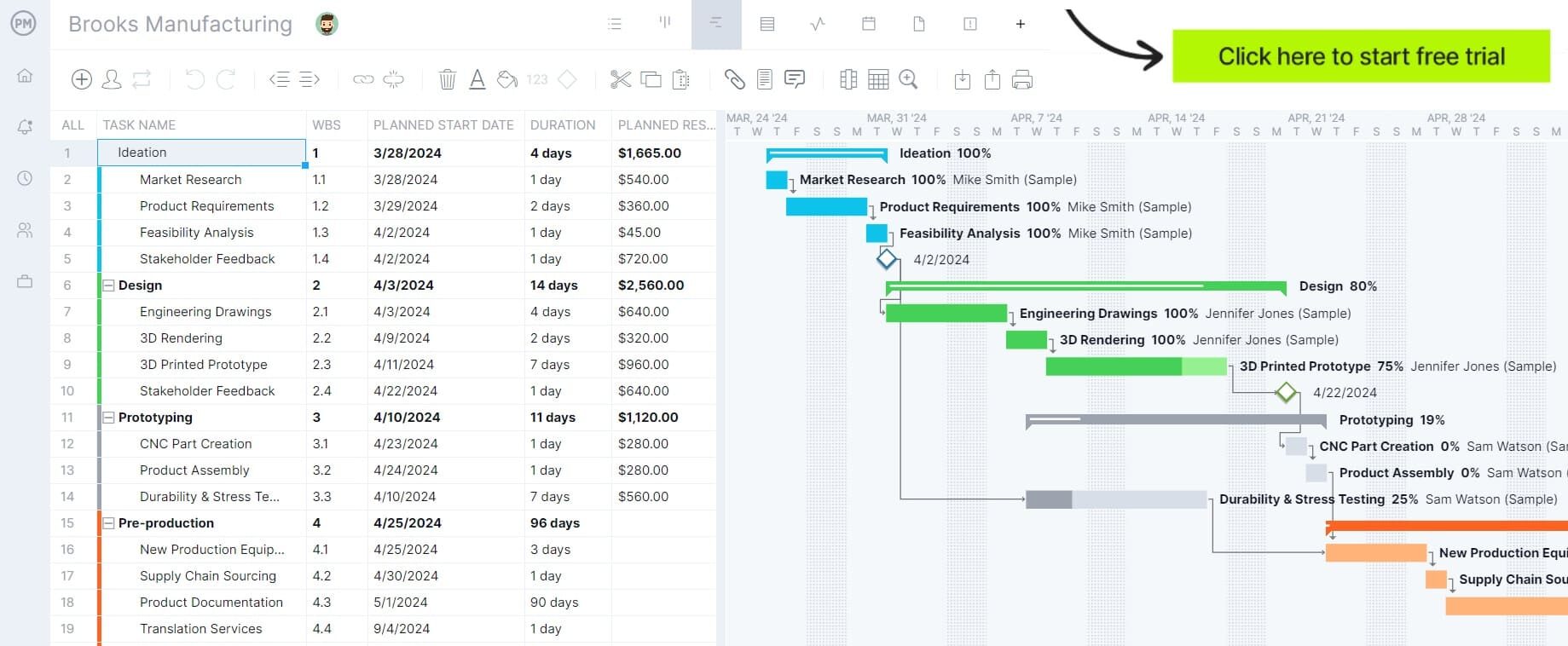
Now that we’ve defined what project milestones are and why they’re important in project management, let’s explore the milestone planning process.
What Is a Milestone Chart?
A milestone chart is a visual project planning tool that uses milestones to divide a project plan into major phases. Due to its simplicity, it’s used when project managers or sponsors need to share an overview of the project schedule with stakeholders or team members without going over every project task.
You can create a milestone chart using a timeline maker or even by hand, but if you’re a project manager, it’s recommended that you use project management software like ProjectManager. That’s because Gantt charts are the best tool to create a milestone plan.
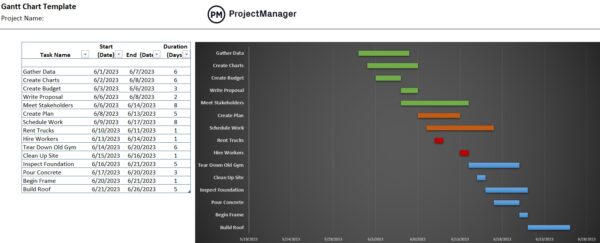
What Is Milestone Planning?
The term milestone planning refers to the process of marking milestones on a project schedule. Milestone planning is primarily done by project managers who will find critical points in the project life cycle and mark them as project milestones so that their team understands what are the key deliverables, activities or phases that need to be completed.
By marking these critical points with project milestones, both project managers and team members can easily track important steps in the project life cycle and better understand what needs to be done and when. The milestone planning process is usually done with the help of milestone charts, also referred to as milestone schedules. Milestone charts allow project managers and project management offices (PMOs) to create a milestone plan or milestone schedule, a visual timeline that shows project milestones over a timeframe.
Project Milestone Plan Example
The image below shows a Gantt chart that was made to plan and schedule a construction project. On the left side you can see a list of tasks, which can be marked as project milestones. Then, on the right side, there are project milestones, marked with diamond symbols which in this case are “bid date,” referring to the date when a construction bid is submitted and “start design work” which is when architects and engineers will start working on the construction design, after the feasibility study and permit application steps.

More importantly, ProjectManager’s Gantt chart goes beyond milestone planning as it not only shows the milestones but also all the tasks that are in between them for better project tracking.
How to Decide What’s a Project Milestone
As discussed above, project management milestones measure progress by breaking a project into phases. According to the project management institute (PMI), there are typically five phases in project management: initiation, planning, execution, monitoring & controlling and closure. But when exactly do you add milestones?
The simple answer is when you’ve completed everything related to that project phase. For example, completing the project charter is usually the last step in the initiation phase of a project. This would be when you place your project milestone to indicate you’re moving from initiation to planning.
However, the exact point at which you want to set your milestones might vary depending on your project, your organization and other factors. It’s always best to seek help from project management experts. A little guidance upfront can save a lot of headaches later on.
Milestones are more of a period in time rather than the specific completion of tasks or project deliverables, so the question arises, can you have milestones that don’t relate to project phases? The short answer is yes. You can set any sort of milestones in project management. Traditionally, they break projects into phases, but you can choose to create a milestone to indicate a big task, important event, deliverable or more.
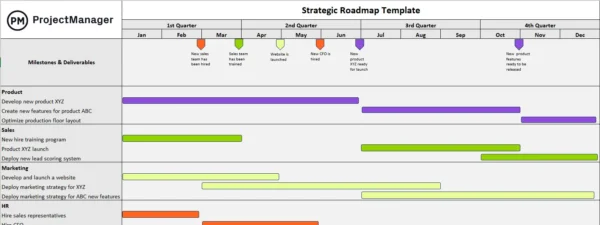
Project Milestones Examples
What could be better to explain how to use milestones in project management than some examples? Let’s look at some common project milestones examples for each phase of the project life cycle.
Project Initiation Milestones
- Assembling a project team: You need a project team who will be responsible for executing the tasks that will ultimately deliver the project. Find team members with the skills and experience needed for the project.
- Project kick-off meeting: This is the first meeting with the whole project team and the project client or stakeholders. You’ll want to establish goals and state the purpose of the project to get everyone on the same page.
- Getting your project charter approved: The project charter is like an elevator pitch for the project, stating the objectives, scope and stakeholders involved. The project sponsor will approve the project by signing the charter.
- Securing financing, equipment or resources: Naturally, a project is just an idea without the funding to pay for the resources that will execute the project tasks. One project milestone is securing those funds.
Project Planning Milestones
- Defining the project scope: The project scope is everything that’ll be done on the project. It lists goals, deliverables, tasks and more.
- Estimating project costs: To budget the project, you have to estimate how much it’ll cost. This is done by using historical data and estimating the specific costs of every resource and the duration of that resource in the project.
- Creating a project budget: Once you have the costs estimated, you can create an accurate project budget. This will outline the costs of everything in the project, from start to finish.
- Creating a project schedule: The project has a start date and an end date. That’s its duration. Between those two points, you must chart each phase and the tasks within it on a timeline that shows the project’s schedule.
- Completing your project plan: The project plan is a document that outlines the project, including its execution and how it’ll be monitored and controlled. Completing the project plan is a milestone.
- Getting your project plan approved: Once the project sponsor or client looks over the project plan, schedule, etc., they will sign off on it. Now the project execution can begin.
Project Execution Milestones
- Begin the execution phase: This is when the work of delivering the project goals begins. The teams are assigned and tasks are completed.
- Producing key project deliverables: There’s more than one deliverable. The final deliverable marks the end of the project, but there are other deliverables throughout the project.
- Completing critical tasks: The critical tasks are those that must be completed to successfully complete the project. You can identify these by finding the critical path.
- Reaching project goals and objectives: The project is all about achieving its goals and objectives. These can be marked off and celebrated as milestones.
Project Closing Milestones
- Creating a project punch list: In construction projects, a punch list is used to list the last work that remains in a project. These items must be completed before the project can be considered done.
- Getting approval from stakeholders to close the project: Finally, a project isn’t done until the project sponsor or client signs off on it. Then all documentation can be signed and archived and the project team released.
These milestone examples apply to any project regardless of its industry. However, as a project manager, you’re free to define the project milestones that you need to help you plan, execute and track your project progress.
Project Milestone Chart Template
To get a better understanding of how to use milestones in a real project plan, try ProjectManager’s free project milestone template
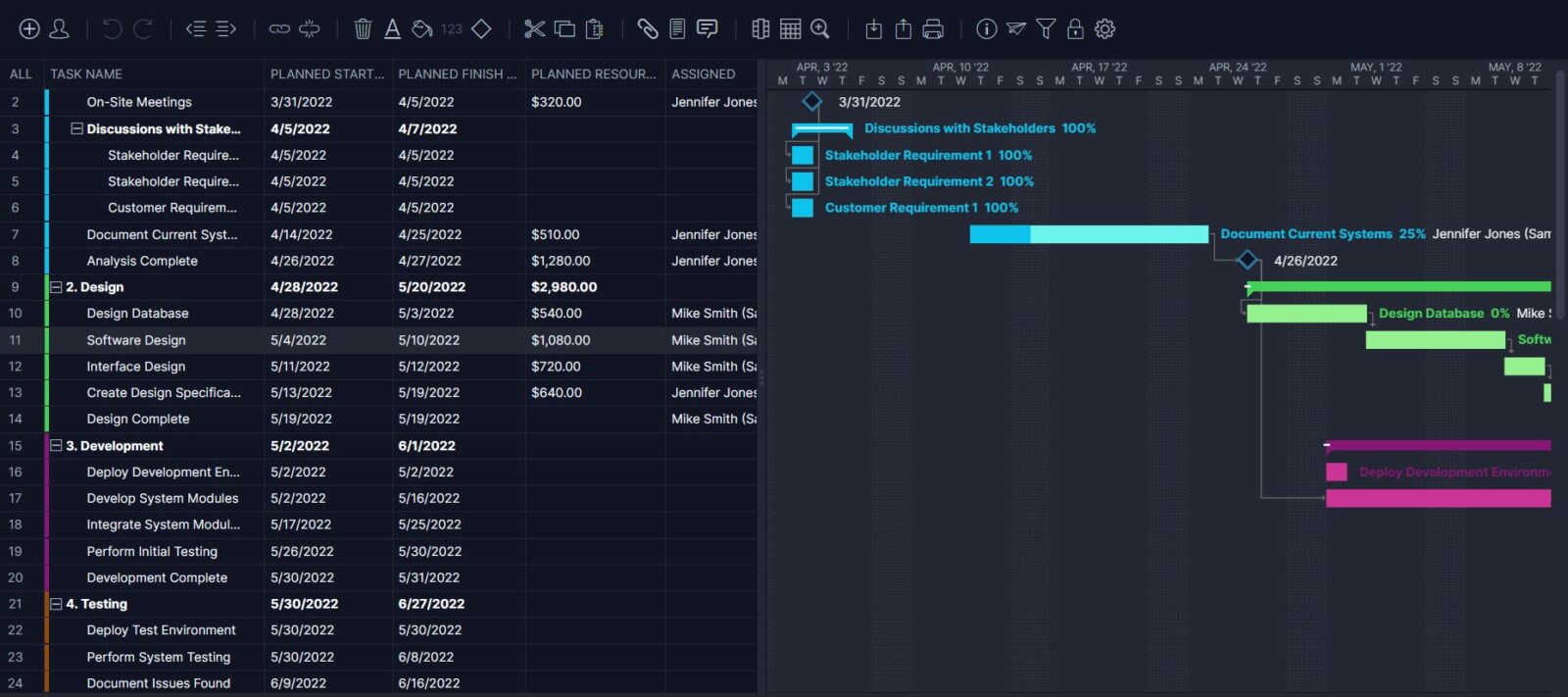
The project milestone template opens in the Gantt chart project view of ProjectManager. This free milestone planning template lets you visualize your project plan, with the tasks to the left and the timeline to the right. As you can see, the diamond icons on the right indicate where there’s a project milestone.
Besides identifying project milestones, this template can be used to identify the critical path of your project, assign work to your team members and identify task and milestone dependencies. The milestones in ProjectManager’s free milestone schedule template can be set to start-to-start, start-to-finish, finish-to-finish and finish-to-start.
Why Should You Use Project Milestones?
Part of scheduling a project is being able to monitor and track the progress of that project schedule in real-time. Milestone charts are a way to track how far you’ve come in the project. By noting the completed milestones, you can measure the distance you are from the finish line of a project.
This comes in handy when you’re dealing with stakeholders. Stakeholders aren’t interested in a granular, detailed report on the project’s progress. They want broad strokes that indicate whether or not the project is moving along as scheduled. A milestone chart is ideal for this kind of reporting because milestones show the major phases you’ve finished at this point in the project, according to your plan.
When you’re presenting a milestone schedule to stakeholders, you can show them the milestones you completed this month and the ones you’re on track to complete for the coming month— and whether or not the milestones were reached as planned or if there were any delays. This simplifies the project reporting process, which is especially helpful when making multiple milestone charts for program management or project portfolio management.

How to Report When a Project Milestone Has Been Reached
How do you know if you’ve in fact achieved the goals set out for a project phase? Without knowing the objectives and key performance indicators you planned to reach upon the close of your project milestone, it’s an empty victory.
Project reporting can respond to this situation. Generate a status report and get a look at the overall health of your project. Did you complete your tasks on time, within the budget you set? For example, you might have noticed a change in your project scope. Perhaps there’s been some slippage and you’re behind schedule. That’s not a milestone to celebrate.
However, it’s also not a cause for undue alarm. Changes are part of any project. The problems arise when those changes aren’t responded to. By running a status report, you know what’s changed and its impact on the project. Now you can work toward getting back on schedule. When you reach your next milestone, run more reports to track your progress and make sure you’re staying on track.
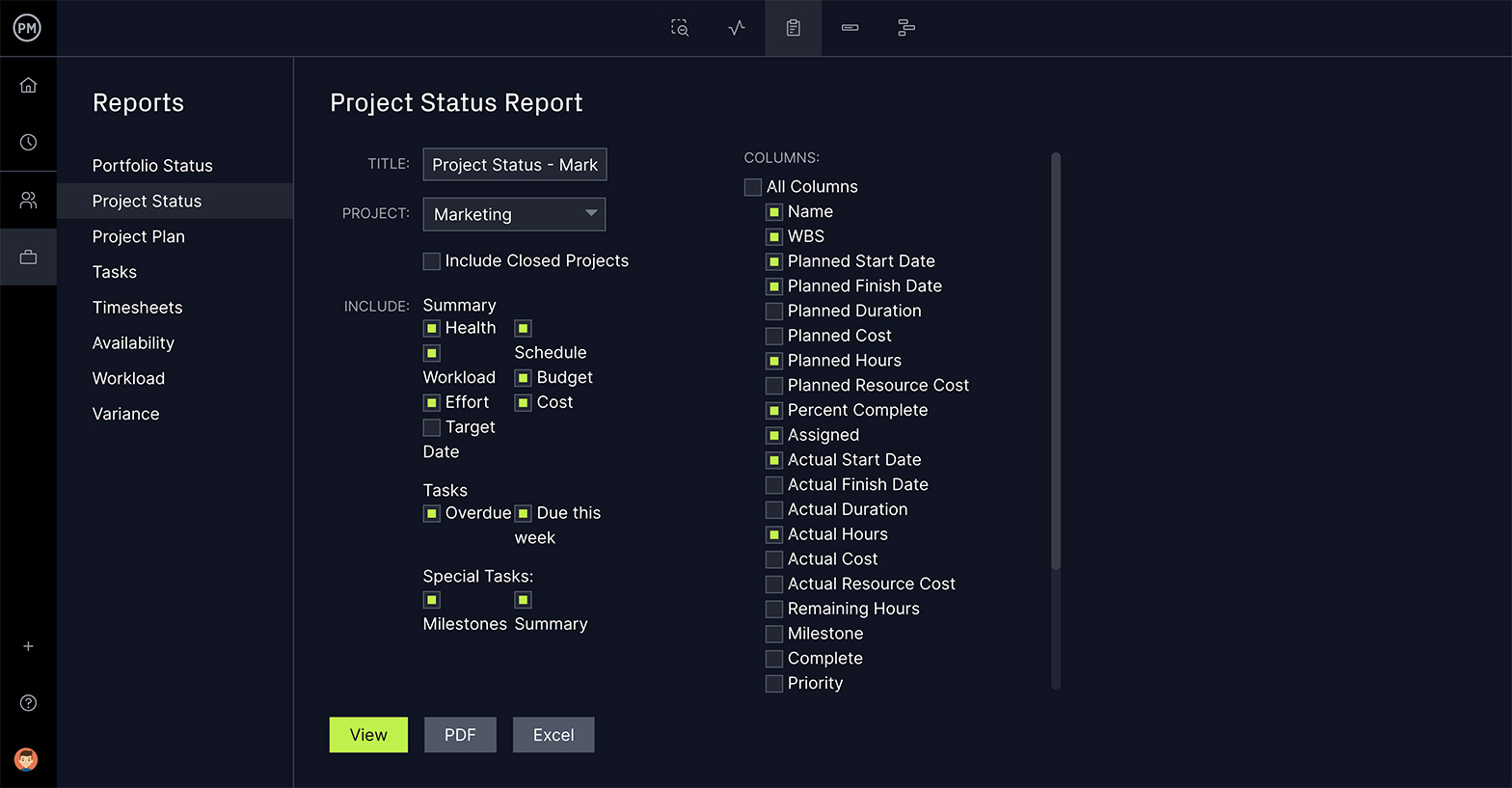
Project Milestone Planning Can Be Fun!
While you’ll mostly use milestones for the nuts and bolts of scheduling, they’re also useful for celebrating project achievements. Obviously, once a project milestone has been reached, it’s because the team has done something right, like completing a project phase or producing an important deliverable. Why not use this opportunity to congratulate them?
Celebrate success in whatever manner is right for you and the project team. It can be as simple as a handshake or a note to the team members. Maybe you want to treat them to lunch or offer a bonus. Whatever the case, acknowledging your team’s achievement pays off in dividends in the forms of employee retention, team loyalty and project buy-in. You’re also fostering a positive relationship with your team and building trust, which is instrumental to a productive project. Using project management software with team collaboration tools helps you ensure everybody is aware of these initiatives.
How to Manage Project Milestones with ProjectManager’s Gantt Chart
With our award-winning online Gantt charts, ProjectManager lets you take full advantage of milestones. This interactive planning tool takes the complexity out of creating and editing a Gantt chart. When you’re planning the project, just add the tasks and their duration, including the due date, and the Gantt chart will populate the timeline automatically.
1. List Your Project Tasks
Use a work breakdown structure (WBS) to figure out your deliverables and the tasks associated with them. Then on the left side of the Gantt chart, you can add all these tasks, breaking them into project phases. Once you add the start and end dates to these tasks, they’ll automatically populate the timeline to the right of the Gantt chart.
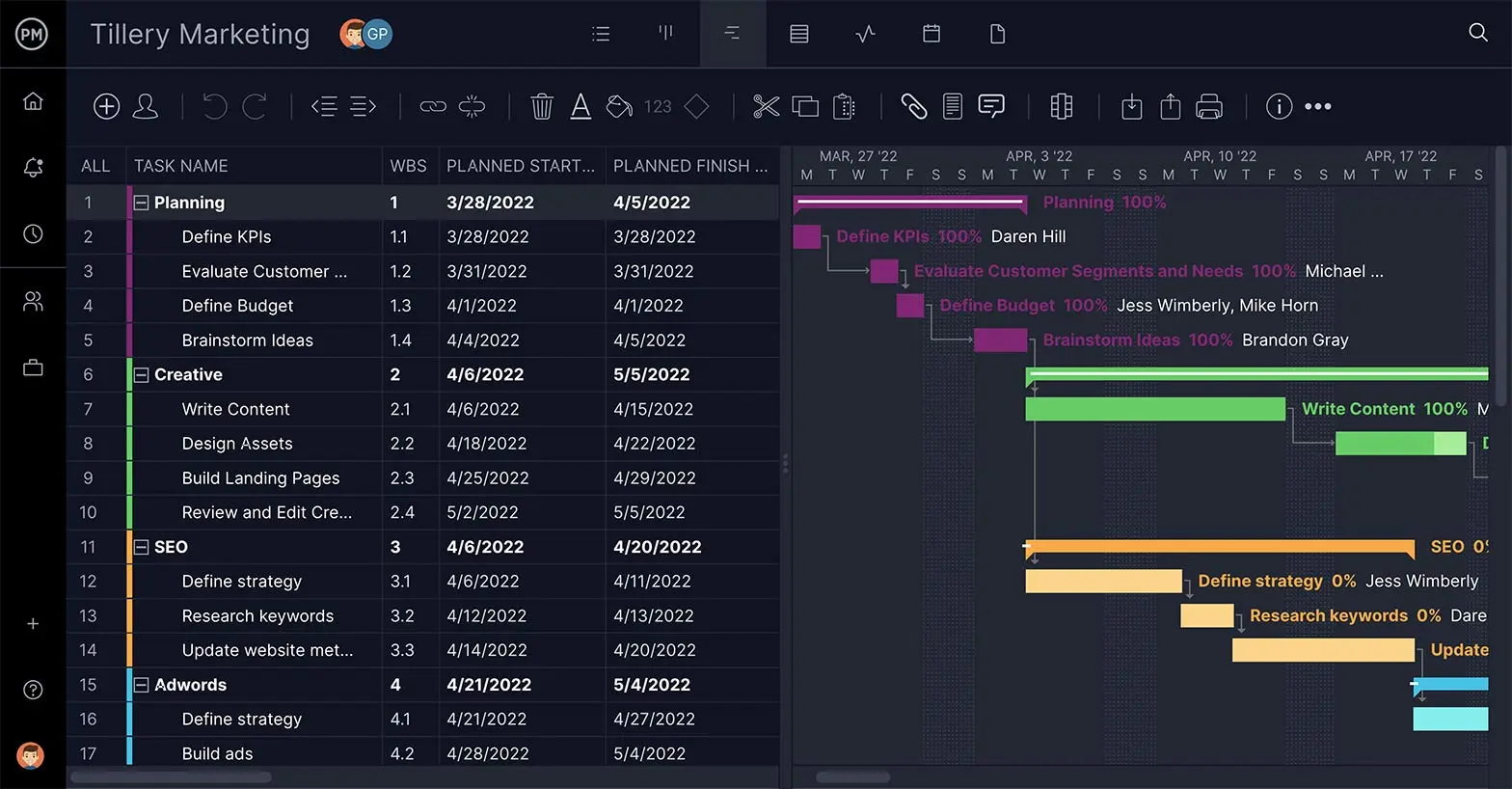
2. Identify Project Milestones
Now you need to identify milestones in your project. They can be used to separate the project phases, but as we explained earlier there are many different deliverables that you can make milestones in your project. Choose the ones that’ll help you monitor your progress, but also think of a milestone as a reason to congratulate the project team and have a celebration to help with morale. Milestones can be added to the Gantt chart by adding the milestone diamond icon.
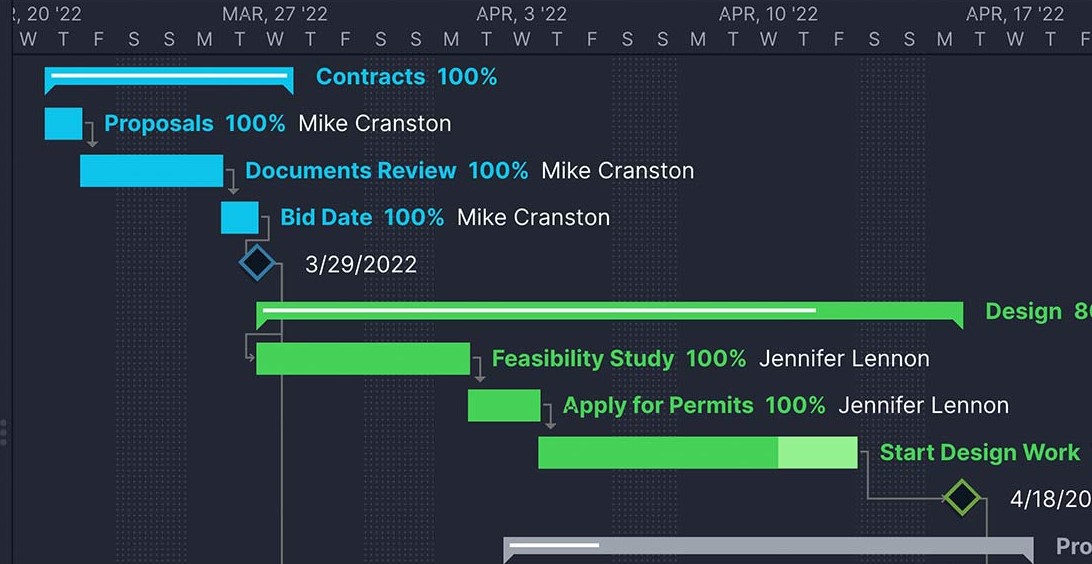
3. Create a Milestone Schedule
With ProjectManager, you can easily assign tasks to your team members and watch their progress as they move toward achieving project milestones. Our Gantt chart software also provides your team with a platform for collaboration. Use it to share updates and files and enable dialogues at the task level. You can even set up automatic alerts to make sure milestones are met.
4. Link Project Milestones
Milestones, like tasks, can be linked. That’s when the phase of one milestone cannot begin until the completion of the phase before it. That way, you’re not blocking team members by having them wait or by not allowing them what they need to move forward with their tasks.
5. Track Your Milestone Plan
When you’ve completed your project schedule add a baseline. This captures the schedule and allows you to track its progress in real time by comparing the planned effort against your actual effort. You can get a high-level overview of progress by toggling over to the real-time dashboard, which automatically tracks costs, time, tasks, workload and more with easy-to-read graphs and charts. There’s no setup required as with lightweight alternatives. It’s ready when you are.

Reporting on milestones for stakeholders is also streamlined because you can view progress in real-time and, with your dashboard, turn that data into clear and colorful charts that can be shared however you see fit. Milestones have never been easier to use.
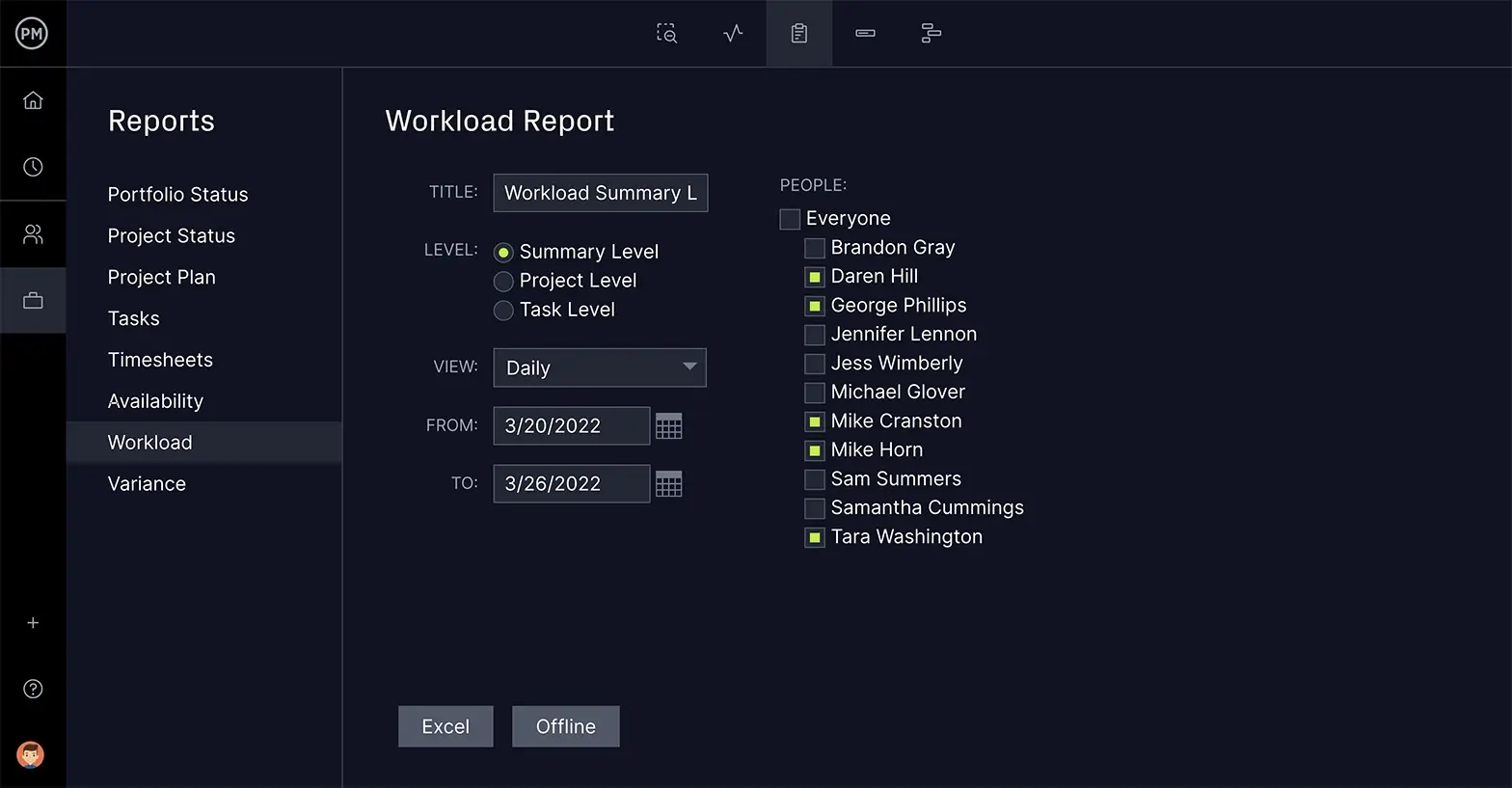
Related Content
There’s a lot to learn in project management before you can plan, schedule, execute and deliver projects successfully. For this reason, we’ve created dozens of blogs, templates, ebooks and videos on the most important topics in project management. Here are some of them.
- 20+ Project Management Tools & Techniques
- Best Project Management Certifications
- Project Management Basics: Definitions, Methods and Tools
- 100+ Project Management Terms: PM Terminology
- PMBOK: The Project Management Body of Knowledge Explained
- Top 15 Project Management Methodologies: An Overview
- Best Project Management Charts for Project Planning
- ¿Qué Son los Hitos de un Proyecto?
Milestones are just one of the many project management tools you get when using ProjectManager. Our online project management software provides online Gantt charts with milestones, real-time data, and a collaborative platform to make you and your team more efficient and productive. See how it can help you manage projects by taking a free 30-day trial today!

